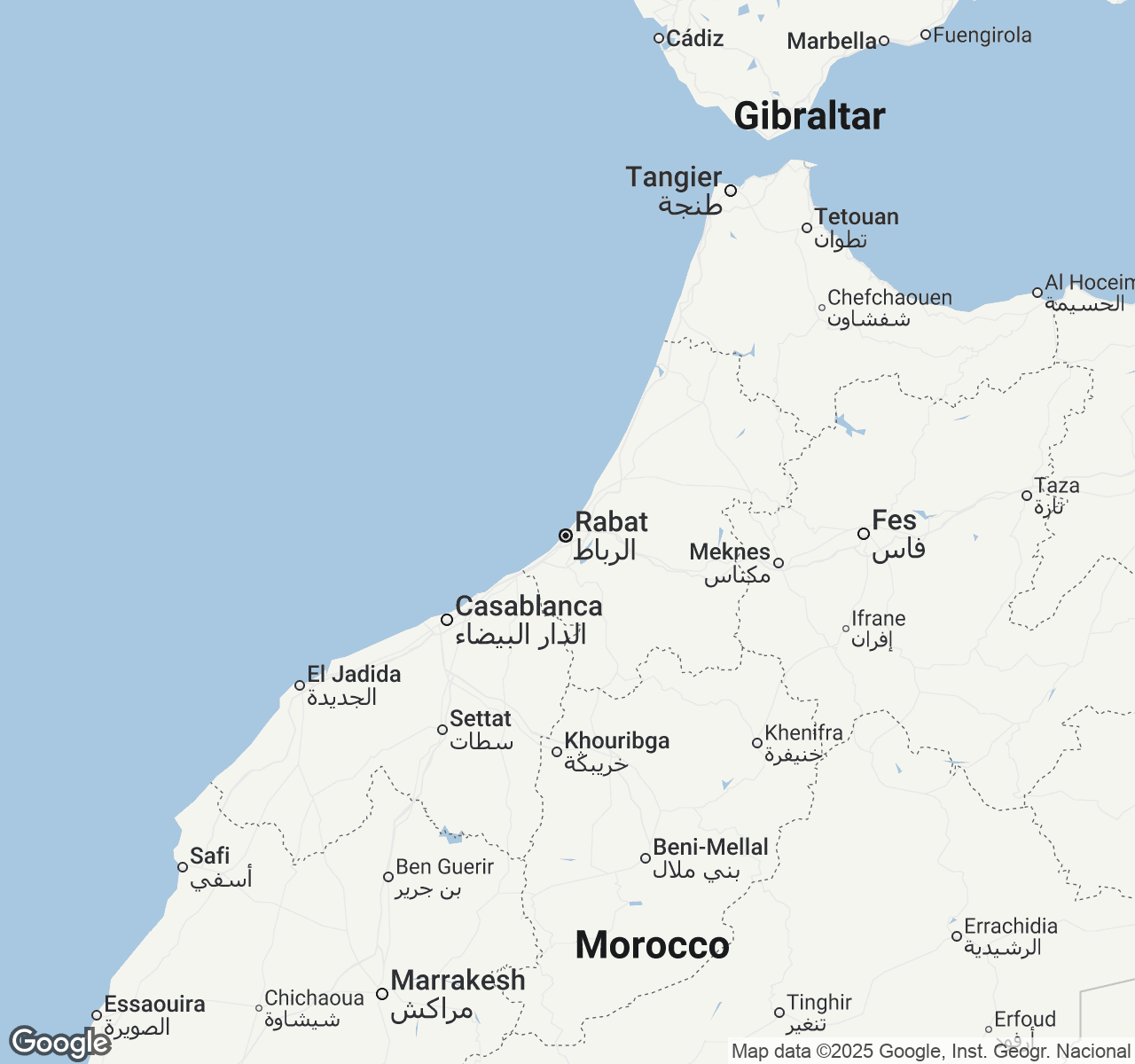
Things to Do in Rabat
Discover the best of Rabat
Plan Your Trip
Essential guides for timing and budgeting
Top Things to Do in Rabat
Discover the best activities and experiences. Book now with our trusted partners and enjoy hassle-free adventures.
Explore Destinations in Rabat
Andalusian Gardens
City
Archaeological Museum Of Rabat
City
Bab Rouah
City
Bouregreg Marina
City
Chellah Necropolis
City
Hassan Tower
City
Kasbah Of The Udayas
City
Mausoleum Of Mohammed V
City
Mohammed Vi Museum Of Modern And Contemporary Art
City
National Library Of The Kingdom Of Morocco
City
Rabat Beach
City
Rabat Medina
City
Royal Palace Of Rabat
City
Villa Des Arts
City
Your Guide to Rabat
About Rabat
Rabat whispers where other Moroccan cities shout, offering an intimate embrace of imperial grandeur and coastal tranquility. As Morocco's political heart, this UNESCO World Heritage city unfolds like a carefully composed symphony—ancient medina walls harmonizing with Art Deco boulevards, the Atlantic's salt-kissed breeze carrying the call to prayer across manicured gardens. Here, the Almohad minaret of Hassan Tower stands sentinel over the Bou Regreg River, while the blue and white kasbah spills toward the ocean like scattered pearls. Rabat's soul lies in its gentle contradictions: bustling souks that never overwhelm, royal palaces that feel approachable, and beaches where diplomatic families picnic alongside local fishermen. The city invites contemplation rather than conquest, rewarding those who linger in its tree-lined avenues and hidden riads with authentic encounters and unexpected discoveries. This is Morocco's most sophisticated secret—a capital that captivates through grace rather than grandeur.
Travel Tips
Transportation: Use the modern Rabat-Salé tramway (7 dirhams) to connect major sites efficiently. Taxis are abundant but insist on the meter or negotiate upfront—expect 10-15 dirhams for short city rides. The train station connects directly to Casablanca (37 dirhams, 1 hour).
Money: Moroccan dirham (MAD) is the only accepted currency. ATMs are widespread in Ville Nouvelle but scarce in the medina. Withdraw cash from bank-operated ATMs to avoid fees. Always carry small bills—many vendors can't break 200-dirham notes.
Cultural Respect: Dress modestly, especially when visiting mosques or the medina—cover shoulders and knees. Friday afternoons see increased religious activity. Learn basic Arabic greetings like 'As-salamu alaykum.' Photography of people requires permission; government buildings are strictly forbidden.
Food Safety: Eat at busy local spots with high turnover for freshest food. Avoid raw vegetables at street stalls but don't miss tagines and pastillas at established restaurants. Bottled water is recommended. Try mint tea everywhere—it's safe and culturally significant.
When to Visit
Rabat's Atlantic location creates a mild climate year-round, making it Morocco's most comfortable capital to explore. Spring (March-May) offers ideal conditions with temperatures ranging 15-25°C, minimal rainfall (20-40mm monthly), and blooming coastal vegetation—perfect for walking tours and outdoor dining. Summer (June-August) brings warm but manageable heat (20-28°C) with virtually no rain, though accommodation prices rise 25-30% during peak European vacation season. The ocean breeze keeps temperatures pleasant compared to inland cities. Autumn (September-November) mirrors spring's appeal with 16-26°C temperatures and occasional light showers (30-60mm), plus 15-20% lower hotel rates as crowds thin. Winter (December-February) sees 10-18°C temperatures and the year's highest rainfall (60-80mm monthly), but sunny days remain frequent. This is true off-season with accommodation discounts up to 40%. Key festivals include the Mawazine World Music Festival (June), Rabat African Film Festival (typically October), and the International Book Fair (February). Culture enthusiasts should visit during shoulder seasons for comfortable sightseeing, while budget travelers benefit from winter's dramatic price drops and fewer tourist crowds.

Rabat location map